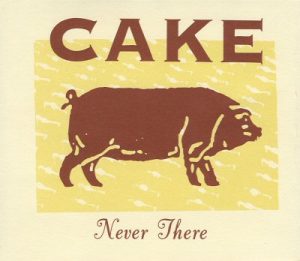You see an Aus Trump-style populist, I see an Australian racist anti-vac wacko, who’s rising in popularity.
Going public real time: Hepatitis A in my daughter’s Brisbane school, this time it’s personal
At 4:23 p.m. AET on Friday, March 3, 8-year-old Sorenne’s school issued a notice to some parents that said:
 “Hepatitis A has been reported at school. Hepatitis A is a viral disease that affects the liver. Anyone can be infected with hepatitis A if they come into direct contact with food, drunks, or objects contaminated by faeces of an infected person.”
“Hepatitis A has been reported at school. Hepatitis A is a viral disease that affects the liver. Anyone can be infected with hepatitis A if they come into direct contact with food, drunks, or objects contaminated by faeces of an infected person.”
I’m not sure they meant drunks, but that’s what it said.
Amy got the e-mail.
I got notification of the e-mail at 5:30 p.m. AET
I immediately called the school.
No answer.
I e-mailed all the school contacts to say, “Hepatitis A is a serious disease for those who are unvaccinated. It passes fecal-oral, and can be acquired by drinks with straws, but usually not drunks (as your note says).”
Standard procedure in the U.S is vaccination clinics for anyone who has the potential to be exposed, but is only useful if done within a few days.:
 So then I called Queensland Health, the state health agency.
So then I called Queensland Health, the state health agency.
Being after 5 p.m. on a Friday, there wasn’t no one around, except for a nice man who said he would investigate.
I e-mailed my questions:
“What is standard vaccination clinic procedure in the event of a positive case?
“What is the vaccination policy for hep A in Australia? Queensland?
“What was the timeline for detection and public notification?”
He said he would do the best he could and call me back.
He didn’t.
This is apparently normal.
On Feb. 23, 2017, I e-mailed media relations at Queensland Health to ask, “Can Queensland Health confirm or deny there was an outbreak of Salmonella in Sunnybank (Brisbane) around the Chinese New Year possibly involving deep-fried ice cream?
“thank you”
No answer.
Going public is about protecting people from public health threats.
Brisbane sucks at it.
Going public: Early disclosure of food risks for the benefit of public health
NEHA, Volume 79.7, Pages 8-14
Benjamin Chapman, Maria Sol Erdozaim, Douglas Powell
http://www.neha.org/node/58904
Often during an outbreak of foodborne illness, there are health officials who have data indicating that there is a risk prior to notifying the public. During the lag period between the first public health signal and some release of public information, there are decision makers who are weighing evidence with the impacts of going public. Multiple agencies and analysts have lamented that there is not a common playbook or decision tree for how public health agencies determine what information to release and when. Regularly, health authorities suggest that how and when public information is released is evaluated on a case-by-case basis without sharing the steps and criteria used to make decisions. Information provision on its own is not enough. Risk communication, to be effective and grounded in behavior theory, should provide control measure options for risk management decisions. There is no indication in the literature that consumers benefit from paternalistic protection decisions to guard against information overload. A review of the risk communication literature related to outbreaks, as well as case studies of actual incidents, are explored and a blueprint for health authorities to follow is provided.
Going public: The new normal for foodborne outbreaks
I’ve had different versions of this paper running through my head for 25 years.
 It started as a rebel-without-a-clue teenager, and led to questions about mad cow disease in 1995 (or earlier) when the UK government knew there were human victims but said nothing until March 1996.
It started as a rebel-without-a-clue teenager, and led to questions about mad cow disease in 1995 (or earlier) when the UK government knew there were human victims but said nothing until March 1996.
My father – the inspiration for the cooking show paper – has asked me a couple times over the years regarding the engineering/automotive sector, when they knew something was wrong; what should we do? But like so many other sectors, it gets brushed aside.
There’s money involved.
My local hockey club can’t figure out how to go public, so it’s no wonder that public health agencies can’t figure it out either.
Yet the job of public health, no matter how many political assholes, no matter how many impediments, and no matter how many dog bites you have to investigate, is to protect public health.
 If people are barfing, it’s time to go public.
If people are barfing, it’s time to go public.
That doesn’t always (rarely) happen.
Anyone can search barfblog.com under the phrase “going public” and find hundreds of incidents of people acting like shits.
But this is important shit, because credibility depends on transparency and trust and truthiness (at least in my idyllic world-view).
Public health is under siege.
The science is there, the outbreaks are there. Go public.
Or at least explain the process so mere mortals can understand.
Going public: Early disclosure of food risks for the benefit of public health
NEHA, Volume 79.7, Pages 8-14
Benjamin Chapman, Maria Sol Erdozaim, Douglas Powell
http://www.neha.org/node/58904
Often during an outbreak of foodborne illness, there are health officials who have data indicating that there is a risk prior to notifying the public. During the lag period between the first public health signal and some release of public information, there are decision makers who are weighing evidence with the impacts of going public.
Multiple agencies and analysts have lamented that there is not a common playbook or decision tree for how public health agencies determine what information to release and when. Regularly, health authorities suggest that how and when public information is released is evaluated on a case-by-case basis without sharing the steps and criteria used to make decisions. Information provision on its own is not enough.
Risk communication, to be effective and grounded in behavior theory, should provide control measure options for risk management decisions. There is no indication in the literature that consumers benefit from paternalistic protection decisions to guard against information overload. A review of the risk communication literature related to outbreaks, as well as case studies of actual incidents, are explored and a blueprint for health authorities to follow is provided.
Food safety and hockey: Play by the rules or penalties will kill ya
A friend from Guelph sent me this pic the other day (that’s in Ontario, Canada) from 2005, the last year I played with the boys before moving to Kansas (where the closest ice was 2 hours away, so we got it pretty good here in Brisbane).
 During the school break — about now for Canadians, so they can all go to Daytona and escape the snow — teams of faculty and staff from at least 6 universities, McGill, Lakehead, wherever — would gather for 3-4 days in Guelph and have a tournament.
During the school break — about now for Canadians, so they can all go to Daytona and escape the snow — teams of faculty and staff from at least 6 universities, McGill, Lakehead, wherever — would gather for 3-4 days in Guelph and have a tournament.
We won in 2005, although I can still describe the gut-wrenching feeling as goalie when up by a goal and time ticking away, one of our defence decided to pinch, leading to a 2-on-0 (yeah, that was you, Naylor).
I made the save, we won the game.
Best to go out on top.
Unfortunately, the seniors team I coach in Brisbane had a 3-1 lead going into the third of the summer finals, penalties and mistakes lead to a regulation 3-3 tie, overtime yielded nothing, and we lost in a shootout.
This is what it looks like when doves cry.
But, great summer season, great group to hang out with as I stand with our captain and two team managers, looking old, not so wise.
Always more to learn.
Jim, maple syrup and anxiety
My friend Jim calms me down almost as much as my puppy, Ted.
 I’ve known Jim since about 1996. We collaborated to shut down emotion-not-evidence-based rules on genetically engineered foods in Canada, and he has always brought a practical sense of what a farmer goes through to make a buck.
I’ve known Jim since about 1996. We collaborated to shut down emotion-not-evidence-based rules on genetically engineered foods in Canada, and he has always brought a practical sense of what a farmer goes through to make a buck.
He also used to terrorize my then young girls by telling them how he shot stray cats left at his dairy farm, because cats carry toxoplasmosis, and it impacted his money-making side.
We were grateful for the three cats from Walkerton.
Jim and Donna’s Walkerton farm is across the road from the source of the E. coli O157 outbreak in 2000 that killed seven and sickened thousands, and I still get chills when Jim recalls another chopper going over the farm, probably another dead person.
Media outlets were broadcasting live from Walkerton, like it was a dam about to collapse.
Or as I said at the time (Jim had to remind me), media wanted cows, manure, river, and townhouses all in one photo.
I spoke with Jim the other day, primarily to balance myself against the most moderate person I know.
Jim has gotten into the maple syrup biz in Ontario (that’s in Canada), he’s got grandkids, like I do, and a seemingly stable situation, running his B&B with Donna, substitute teaching, and new farming ventures.
I admire that.
Never there: No comment as Salmonella outbreaks close two Canberra cafes and no word in Brisbane
There’s an outbreak of Salmonella in Canberra (that’s Australia’s capital, on a swamp, like Washington, DC), and there’s an outbreak in Brisbane.
 They are not related, other than no one will say something in public.
They are not related, other than no one will say something in public.
The whole idea of risk communication is to let people know when there is a problem, what they can do to avoid the problem, and stop making things worse by refusing to ID the source or the food implicated.
It’s OK, social media will fix that for the bureaucrats, but why spend taxpayer money on agencies that won’t tell the public shit?
I called Queensland Health a week ago, to ask them about the Chinese New Year Salmonella outbreak in Brisbane, and the media thingy said, e-mail your question, which I did, and still, no answer.
Government-types are never there.
Which is why I always tell private sector types to expect nothing from the government.
If there’s an outbreak, the government types will still have their job and super: you won’t.
According to ABC News two weeks ago – and there’s been nothing public since — an outbreak of salmonella has forced two popular Canberra cafes to close their doors while they are investigated by health inspectors.
The ACT Government Health Protection Services (HPS) has served prohibition orders on the two cafes linked to the outbreak, located in Belconnen and Gungahlin.
The cafes are Ricardo’s in Jamison and the Central Cafe in Gungahlin.
In a statement, HPS said health inspectors had uncovered problems “related with food handling processes and procedures” at both stores.
“The cafes will be closed until such time as the identified issues have been rectified,” the statement said.
“This action means that there is no ongoing risk to the health of the ACT population from these events”.
The health directorate refused to comment on how many people had been affected by the outbreak while the investigation was in process.
Though there were a number of posts on social media from those claiming to have eaten at Ricardo’s before falling ill.
“I know someone who was in hospital last week, for four days, with a truly awesome bout of salmonella after eating there,” one person wrote on Facebook.
“My partner and I are both in hospital,” wrote another.
“Bought cake from there Monday last week, was shivering in bed with fever and food poisoning with girlfriend until Friday, she’s fine I’m still not over it,” a user said on Reddit.
“Ugh ate there Wednesday last week. Friday, got sick/gastro for 5 days. Guess I have an idea where it came from now…”
Truthiness: I miss it too
I’ve always told my five daughters, never believe someone who says, trust me.
Same with, believe me.
But who am I to explain.
Food Safety Talk 120: It’s ‘Sody Pops’
Continuing the purple themed image run, Don and Ben talk lifehacks, what to call fizzy beverages, other junk food, good TV, junk science, challenges that small food processors encounter and food fraud (with a bonus of press release before publication). 
Episode 120 can be found here and on iTunes.
Here are some links so you can follow along at home.
- Makebelieve Help, Old Butchers, and Figuring Out Who You Are (For Now)
- Dishwasher Detergent Soak Cleans Dishes Overnight
- Soda vs Pop vs. Coke: Who Says What, And Where?
- Soda Vs. Pop Map
- The Pop Shoppe – Wikipedia
- Reese’s Peanut Butter Cups
- Gunga Galunga
- SoftRound 24 Pack Foam Earbud Earpad Ear Bud Pad Replacement Sponge Covers
- Ron Swanson
- Tom Haverford
- Girls (TV series))
- Last Week Tonight with John Oliver
- Always Be Closing – Glengarry Glen Ross Movie clip
- Fun Kee Jenkins on LinkedIn
- Spicy In Means Spicy Out (pdf)
- Librarian’s list of ‘predatory’ journals reportedly removed due to ‘threats and politics’
- Impact factor
- h-index
- Family finds live chicken in washroom at Cobourg McDonald’s
- @MCBazacoPhD onTwitter
- GOOGLE “blacklists” Natural News
- xkcd: Duty Calls
- Morgan Hill Restaurant Fined $120K For Serving Tilapia As Petrale Sole
- Tests Show Most Store Honey Isn’t Honey
- Andrew Schneider, great journalist and great guy, passes
- Canadians concerned about food fraud
- Yeah, well that’s just your opinion man. (Big Lebowski)
- Presser – Wiktionary
- Melissa McCarthy
- MDA issues consumer advisory for Dukarani Food Processing products
- BeFoodSafe.ca
- David Simon (@AoDespair) on Twitter
it’s the poop
I was wearing one of our 2006 don’t eat poop T-shirts today as I walked Sorenne to school with Ted the wonderdog.
 Most families noticed Ted, but one parent said, “sage advice.”
Most families noticed Ted, but one parent said, “sage advice.”
Clearly someone I could chat with.
He knew all the Australian outbreaks, and said he was in California when spinach happened in 2006, so was a good chat.
But maybe we talk about poop too much. From our artistic (and spelling-challenged) daughter:
Food safety fail: BBC Food Detectives
Our resident non-aging television personality and food safety dude, Rob Mancini, who did a MSc with me all those years ago, writes that food safety professionals have been using a number of different mediums to get the word out on food safety.
 One such medium are blogs, like the one you are reading now, using current press releases to disseminate information to the masses. Others use eclectic marketing campaigns, some which are validated others not, radio, Internet, and TV.
One such medium are blogs, like the one you are reading now, using current press releases to disseminate information to the masses. Others use eclectic marketing campaigns, some which are validated others not, radio, Internet, and TV.
While I am a proponent in using media to get information out in a rapid, relevant manner, TV reality shows can be misleading and often times food safety takes a back seat to sensation.
TV reality shows are a fine balance between science and fiction….. it’s about the ratings and trying to get a second season. Prior to embarking on my journey with Kitchen Crimes back in 2005, I was bombarded with emails from my colleagues not to sensationalize the facts and use weird gadgets to uncover dirt, grime, or whatever was lurking in the kitchen. Except hat doesn’t get ratings, sometimes we have to sensationalize and grasp peoples’ attention.
But it has to be done right. At least it gets people talking and thinking about food safety.
The BBC Food Detective show was peppered with a number of food safety fails including no thermometers to verify internal food temps. Really, no thermometer….. something so simple that can literally save someone’s life. As a society, we do a horrible job in food safety communication, just look at all of the inconsistencies found on the Internet, in food regulations, provincially and internationally, and in the media.


